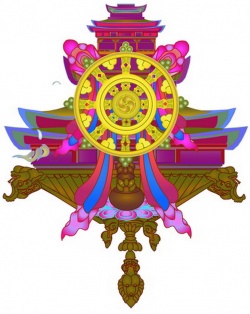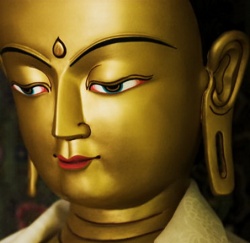Satyadevata
Satyadevata, guardian divinities, and companion divinities. Satyadevata include Manjusri Bodhisattva, Avalokitesvara Bodhisattva, The angry-looking Satyadevata are represented by Vajrabhairava, Vajrakila, Hayagriva, and Vajrapani. The good-and-angry-looking Satyadevata are Guhyasamaja, Samvara, Hevajra, Kalachakra and Vajravarahi.
Satyadevata / Sadhanas
In Tantric practice, the practitioner is usually required to set a particular aspect of enlightenment to work with. Accordingly, the respective Buddha or Bodhisattva will be recommended to the practitioner by the Guru, that is appropriate to the personality and the needs of the practitioner. For instance, if the practitioner wishes to tune into and develop compassion, the Tara manifestation will be cultivated as a kind of role model. Then, the practitioner will contemplate the chosen deity through the special meditation session, known as Satyadevata / Sadhana.
Though Sadhana varies considerably in its complexity and duration, the practitioners are generally required to cultivate Sadhana regularly on a daily basis and to achieve the state of calmness in meditation. The use of the Mantra with respect to the chosen deity is essential for entering the state of emptiness, and then generating the specific image of the chosen deity within the practitioner's mind and seeing himself as that deity.
The body form of the deity during initial phase of transformation is known as 'Samaya-sattva', i.e. 'commitment being'. The Samaya-sattva is not the deity itself, but a symbolic form used in the process of self-realization.
A particular letter or syllable, color or sound is then generated from the body form. Later, rays of energy will radiate out from the syllable and fill the entire universe. Then, the practitioner invokes and invites the deity to come to them externally, though it is understood that the deity is an inherent aspect of an individual's own enlightened mind in reality. The actual form of the deity is called Jnana-sattva, or 'awareness being'. Accompanied with a set of four Mudras, the practitioner draws down the actual deity with a designated Mantra.
After engaging the Mantra recitation silently for some time, the practitioner may become tired. It is recommended to draw the radiating light energy back to the heart and rest. The mental recitation and accompanying visualization can be resumed if desired, or else the session can be brought to the end. To conclude the Sadhana, the practitioner should reverse the process of generation, i.e. to release the 'awareness being', then 'commitment being' then to contract the light energy and disappear back into the state of emptiness from which it arose. The practitioner should rest peacefully for as long as possible in this state.
Various accomplishments, known as 'Siddhi' may be acquired through these Sadhanas.
Some are mundane while the others are supramundane.
Yidam

